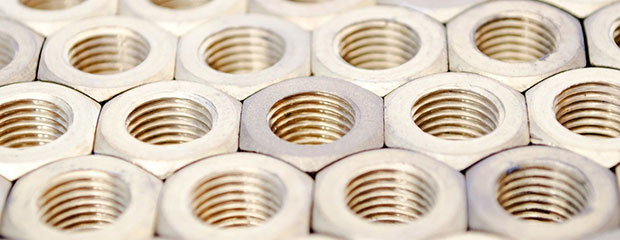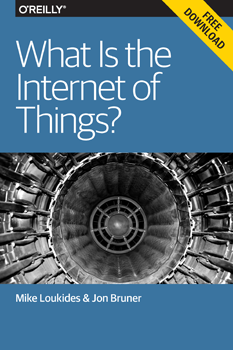"Software Replaces Physical Complexity" entries

Signals from the O’Reilly 2015 Solid Conference
Insight and analysis on the Internet of Things and the new hardware movement.
Practitioners, entrepreneurs, academics, and analysts came together in San Francisco this week to discuss the Internet of Things and the new hardware movement at the O’Reilly 2015 Solid Conference. Below we’ve assembled notable keynotes and interviews from the event.
Lock in, lock out: DRM in the real world
Author and activist Cory Doctorow uses his Solid keynote to passionately explain how computers are already entwined in our lives and our bodies, which means laws that support lock-in are much more than inconveniences. Doctorow also discusses Apollo 1201, a project from the Electronic Frontier Foundation that aims to eradicate digital rights management (DRM).

The smartest way to program smart things: Node.js
The reasons to use Node.js for hardware are simple: it’s standardized, event driven, and has very high productivity.
Node.js is on the rise for programming hardware. The full Google V8 version helps run Intel’s Edison chip. The IoT community has already embraced Node.js for embedded devices and robotics, with notable examples including Nodebots and Cylon. And now, even smaller devices like Tessel 2 — a development platform for prototyping hardware — are using JavaScript.
Why is this a big deal? It makes programming hardware much simpler — college students can learn Node.js in a weekend. And it makes it possible to build and program an entire IoT device, from start to finish, in less than four hours. This may very well be the future of hardware programming.
Intel principal engineer Michael McCool will be at O’Reilly’s Solid Conference, June 23-25, 2015, to lead a workshop on using Node.js and HTML5 to program the Internet of Things. “In only three and a half hours, we’re going to walk people through building a complete and sophisticated IoT system,” McCool told me in an interview. That includes building a hardware prototype, hardware interfacing, streaming telemetry, building a UI on the phone, and creating an app. “The Web server part is just five lines of code. The rest of it is similarly simple,” he said. “The complete code is only about 200 lines on the embedded device, plus a little bit more…when you add in graphs of things for streaming data.” Read more…

Why the Internet of Things isn’t the same as the new hardware movement
Cheap, accessible, open hardware is driving the IoT.
![]()
The Internet of Things (IoT) has been committing a lot of buzzword imperialism lately. It’s a hot term, marching across the technological countryside and looking for rich disciplines to capture. Electronics, manufacturing, and robotics, among others, have all become dominions of the IoT. The result is that the meaning of IoT has broadened to include practically anything that involves 1. technology, and 2. something physical.
At the same time, practitioners have been trying to escape the IoT — and its early association with Internet-connected refrigerators — for years. Big enterprises that want to develop serious applications for the Internet of Things have come up with other terms for what they’re doing, like Internet of Everything (Cisco) and Industrial Internet (GE).
Let’s put a stop to this and define some boundaries. In my view, the Internet of Things is the result of a much larger and more important movement that’s about making the physical environment accessible in the same way that the Internet has become accessible over the last 20 years. I’ll call this the “new hardware movement.” Read more…

Rebooting a 1970s satellite with modern software and hardware
The O'Reilly Solid Podcast: Dennis Wingo on reestablishing contact with a satellite that had been silent for 17 years.
Subscribe to the O’Reilly Solid podcast to stay on top of topics related to the Internet of Things, hardware, software, manufacturing, and the blurring of the physical and virtual worlds.
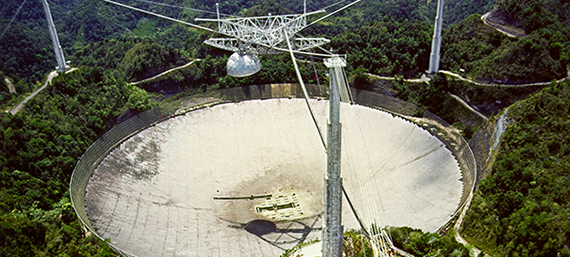
The Arecibo Observatory in Puerto Rico, where Dennis Wingo and his team established contact with the ISEE-3 satellite. Public domain image: Wikipedia.
In the first episode of the Solid Podcast, we talked with Dennis Wingo, founder of Skycorp, in the former NASA McDonald’s where he’s been restoring the first images of the moon taken from space.
After an hour of recounting his techno-archaeology exploits — reverse-engineering the arcane analog image-transmission systems that NASA’s engineers developed in the 1960s — Dennis paused and said, “and that’s just one of our history projects.”
That teaser is where we begin today’s episode. Ready to apply modern computing to another analog challenge, Dennis turned his attention to the reboot of the International Sun/Earth Explorer-3, a research satellite launched in 1978 and commended to the heavens in 1997.
NASA decommissioned the equipment for communicating with the satellite in 1999, so Dennis set about reverse-engineering the ISEE-3’s control system and devising a way to communicate with it. In the 1970s, he would have needed custom analog hardware, but now, general-purpose hardware is powerful enough that he could do it all with software. Read more…

A new dawn of car tech: customization through software, not hardware
Three ways entrepreneurs can bring the rate of progress we’ve seen in computing and communication to car tech.
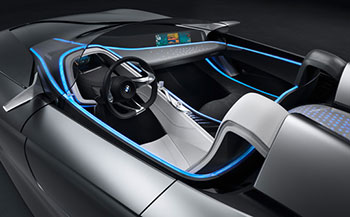
BMW’s Vision ConnectedDrive concept car. Image: BMW.
Skeptics will cite the arduous three-to-six-year automotive design cycles, onerous qualification requirements, and thin margins that plague the automotive value chain. By attracting the greatest engineers and entrepreneurs, the car business of the early 20th century took us from horseback to stylish coupes within a generation, soon to be followed by tire-smoking muscle cars. Cars built during and after the late 80s pollute less over their lifetimes than their predecessors did parked. Sound like Moore’s Law to you? Read more…

Five things to consider before offering new technology as a cloud service
Entrepreneurs must apply the same decision-making processes used when starting any infrastructure company.
Attend Shahin Farshchi’s free webcast “5 Tools for Building Value Into Your Hardware Startups,” being held May 19 at 10 a.m. PT.
There are many compelling reasons to package new technology as a cloud service. Connected devices come in many forms: dongles, phones, tablets, televisions, cars, and even buildings. Intel is offering “connected buttons,” and others are introducing connected jewelry and accessories. Internet connectivity is also available through many channels: satellite, cellular, WiFi, bluetooth, and hybrid meshes. The plethora of powerful, beautiful connected devices, coupled with ubiquitous connectivity, creates an incredible channel for delivering novel services.
Hotmail, Salesforce, Workday, and many other software-as-a-service companies have fared well by offering their applications directly through Internet browsers. DropBox and Box, while creating tremendous media attention, have yet to prove they can offer storage services profitably on the cloud. Amazon doesn’t disclose the economics of its Amazon Web Services business in detail, though one would expect the opposite to be true if it were a lucrative business. ASICMiner and KNCMiner are leveraging their proprietary hashing chips to offer bitcoin mining as a service. Nervana is leveraging its proprietary chips as a service for deep learning. As more entrepreneurs attempt to harness the cloud as a powerful distribution channel for their novel technologies, here are a few factors to consider. Read more…

Who should and should not be talking to your fridge?
A reflection on the social impacts of smarter hardware in the physical world.
Attend Solid 2015 to explore the IoT’s impact on privacy and security.
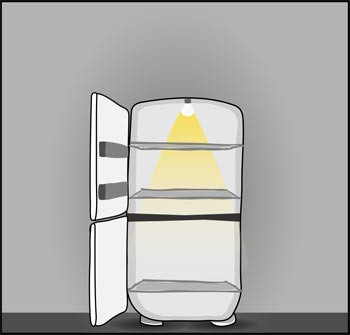 Here’s the scenario today: I am out of milk, and my refrigerator sits there, mute and unsympathetic. Some time in the 90s, I was promised a fridge that would call the store when I was out of milk, and it would then be delivered while I, ignorant of my dearth of dairy, went about my business. Apparently such predictions were off. Someone forgot to tell my fridge manufacturer to put sensors, software, and networking gear into their products.
Here’s the scenario today: I am out of milk, and my refrigerator sits there, mute and unsympathetic. Some time in the 90s, I was promised a fridge that would call the store when I was out of milk, and it would then be delivered while I, ignorant of my dearth of dairy, went about my business. Apparently such predictions were off. Someone forgot to tell my fridge manufacturer to put sensors, software, and networking gear into their products.
But there is hope. The dumb objects in the analog physical world are being slowly upgraded. From the very sexy telemetry systems in new BMWs to the very unsexy pallets of lettuce in a warehouse, Things That Heretofore Were Blind and Mute are getting eyes, ears, mouths, and in some cases, brains. This is evolution, not revolution, and while it is still slow-moving, it’s beneficial to reflect on some of the social impacts of smarter hardware in the physical world. Read more…

The Internet of Things is really about software
Our new report, "What is the Internet of Things," traces the IoT's transformations and impact.
One of the reasons that it’s ubiquitous is that it bears on practically everything. A few years ago, many companies might plausibly have argued that they weren’t affected by developments in software. If you dealt in physical goods, it was hard to see how software that existed strictly in the virtual realm might touch your business.
The Internet of Things changes that; the kinds of software intelligence that have already revolutionized industries like finance and advertising are about to revolutionize all the other industries.
Mike Loukides and I have traced out our idea of the Internet of Things and its impacts in a report, “What is the Internet of Things,” that’s available for free here.
As much as we all love the romance and gratification of hardware, the Internet of Things is really about software; the hardware just links the Internet to the rest of the world. If you think of the IoT as a newly developing area in software, it’s easy to draw out some characteristics of it that are analogous to things we’ve seen in web software over the last decade or so. Read more…

Biology as the next hardware
Why DNA is on the horizon of the design world.
I’ve spent the last couple of years arguing that the barriers between software and the physical world are falling. The barriers between software and the living world are next.
At our Solid Conference last May, Carl Bass, Autodesk’s CEO, described the coming of generative design. Massive computing power, along with frictionless translation between digital and physical through devices like 3D scanners and CNC machines, will radically change the way we design the world around us. Instead of prototyping five versions of a chair through trial and error, you can use a computer to prototype and test a billion versions in a few hours, then fabricate it immediately. That scenario isn’t far off, Bass suggested, and it arises from a fluid relationship between real and virtual.
Biology is headed down the same path: with tools on both the input and output sides getting easier to use, materials getting easier to make, and plenty of computation in the middle, it’ll become the next way to translate between physical and digital. (Excitement has built to the degree that Solid co-chair Joi Ito suggested we change the name of our conference to “Solid and Squishy.”)
I spoke with Andrew Hessel, a distinguished research scientist in Autodesk’s Bio/Nano/Programmable Matter Group, about the promise of synthetic biology (and why Autodesk is interested in it). Hessel says the next generation of synthetic biology will be brought about by a blend of physical and virtual systems that make experimental iteration faster and processes more reliable. Read more…

What you need to know for the hardware-software convergence
Core competencies and essential reading from hardware, software, manufacturing, and the IoT.
As I noted in “Physical and virtual are blurring together,” we now have hardware that acts like software, and software that’s capable of dealing with the complex subtleties of the physical world. So, what must the innovator, the creator, the executive, the researcher, and the artist do to embrace this convergence of hardware and software?
At its core, this is about a shift from discipline toward intent. Individuals and institutions — whether they’re huge enterprises, small start-ups, or nonprofits — must be competent in several disciplines that increasingly overlap, and should be prepared to solve problems by working fluidly across disciplines.
To use Joi Ito’s example, someone who wants to develop a synthetic eye might begin to approach the problem with biology, or electronics, or software, or (most likely) all three together. Many problems can be solved somewhere in a large multidimensional envelope that trades off design, mechanics, electronics, software, biology, and business models. Experts might still do the best work in each discipline, but everyone needs to know enough about all of them to know where to position a project between them.
Below you’ll find the core competencies in the intersection between software and the physical world, and our favorite books and resources for each one.
Electronics for physical-digital applications
- Practical Electronics, by John M. Hughes: To know what’s possible and where to start, it’s essential to understand both the analog and digital sides of electronics. This is O’Reilly’s authoritative introduction to both analog and digital electronics, with information on circuit design, common parts and techniques, and microcontrollers.
- Raspberry Pi Cookbook, by Simon Monk: The Raspberry Pi is rapidly becoming the standard embedded computing platform for prototyping and experimentation, with enough computing power to run familiar interpreted programming languages and widely supported operating systems.
- Arduino Cookbook, by Michael Margolis: The Arduino microcontroller offers a fluid interface between digital and physical; it’s highly extensible and accessible to people with no prior experience in either electronics or code.
